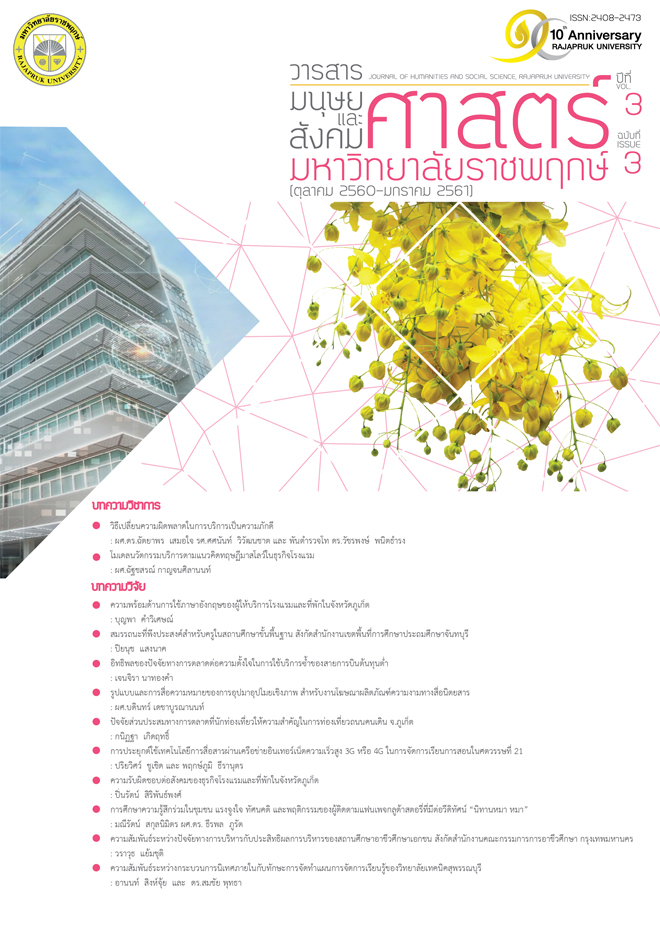Model of Service Innovation with Maslow’s Hierarchy of Needs in Hotel Business
Main Article Content
Abstract
This academic article intends to present “Model of Service Innovation with Maslow’s Hierarchy of Needs in Hotel Business”, from the conceptual study of innovation consists of the “S” Curve of Technology and S-Curve and Adopter segmentation, 3 Stages of Services in Hotel included 1) Core service 2) Expected service and 3) Exceeded service and the importance of Hotel’s Service Innovation. Maslow’s Hierarchy of Needs is applied for this study’s conceptual framework which shows the linkage between innovation and Maslow’s Hierarchy of Needs for reaches the conclusion of service innovation in hotel business to approach the best service for the beyond expectation. The study found that, the linkage between "S" Curve of Technology and Maslow's Hierarchy of Needs is “The Cycle” and the key factor is the endless human needs while the "service provider" section is something that cannot be ignored. From the above mentioned, it is important for the hotel business to maintain its strengths in terms of "Service" and "Innovation" because of innovation influences the decision-making process, choosing a service design (Service Design) as a key element in service delivery and lead to competitive advantage of the organization. Innovation is also the identity of each organization by define the attributes of what people will perceive and interpret, these are things that represent the value and value of the hotel industry.
Article Details
References
พยัต วุฒิรงค์. (2557). การจัดการนวัตกรรม: ทรัพยากร องค์การแห่งการเรียนรู้ และนวัตกรรม. กรุงเทพฯ: สานักพิมพ์แห่งจุฬาลงกรณ์มหาวิทยาลัย.
Damanpour, F. (1991). Organizational Innovation A Meta-Analysis of Effects of Determinants and Moderators. The Academy of management Journal. 34, 555-590.
Drucker, P. F. (1985). Innovation and Entrepreneurship. New York: Harper and Row Publishers.
Drucker, P. F. (1993). Post-Capitalist Society. New York: Harper-Collins.
Fastcompany. (2017). The Most Innovative Companies of 2017. Retrieved 25th June 2017, from https://www.fastcompany.com/most-innovative-companies/2017.
Nohria, N. and Gulati, R. (1996). Is Slack Good or Bad for Innovation?. The Academy of Management Journal. 39, 1: 1245-1264.
Robbins. (2001). Maslow’s Hierarchy of Needs. Retrieved 25th June 2017, from http://www.businessballs.com.
Rogers, Everett M. (1962). Diffusion of Innovations. Retrieved 26th June 2017, from https://www.gotoknow.org/posts/510631.
Rogers, Everett M. (1983). Diffusion of Innovations. Retrieved 26th June 2017, from https://www.gotoknow.org/posts/510631


